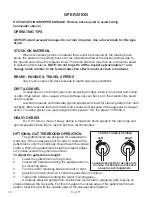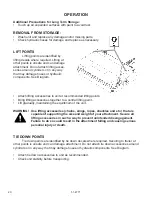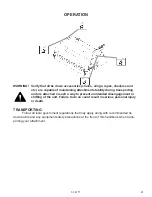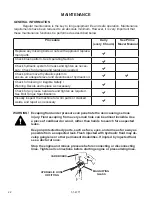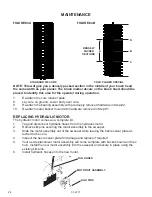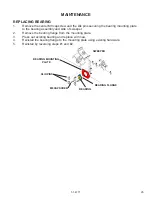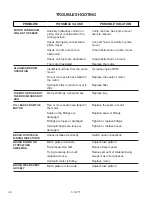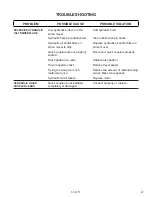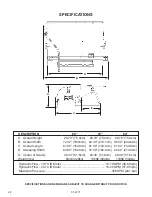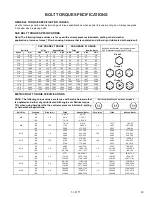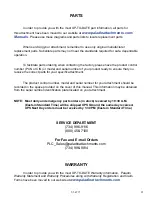
17
51-4771
OPERATION
BEFORE OPERATING SWEEPER:
• Learn sweeper and prime mover controls in an off-road location.
•
Be sure that you are in a safe area, away from traffic or other hazards.
• Perform all daily maintenance listed in the Maintenance section of this manual.
• Check tire pressures and ratings before sweeping. Be sure they match the prime mover
load rating. Weigh sweeper end of prime mover to insure proper tire rating.
•
Remove from the sweeping area all property that could be damaged by flying debris.
• Be sure all persons not operating the sweeper are clear of the sweeper discharge area.
• Always wear proper apparel such as a long sleeved shirt buttoned at the cuffs; safety
glasses, goggles or a face shield; ear protection; and a dust mask.
WHILE OPERATING SWEEPER:
• When operating sweeper, adhere to all government rules, local laws and other professional
guidelines for your sweeping application.
• Before leaving the operator’s area for any reason, lower the sweeper to the ground. Stop
the engine, set the brakes and remove the key.
•
Use the slowest rotating speed that will do the job to minimize flying debris.
• Keep hands, feet, hair and other loose clothing away from all moving parts.
• Leave all shields and safety equipment in place when operating the sweeper.
• Be aware of the extra weight and width a sweeper adds. Reduce travel speed accordingly.
Keep in mind the center of gravity changes when an attachment is installed.
• When sweeping on rough terrain, reduce speed to avoid “bouncing” the sweeper. Loss of
steering can result.
• Never sweep toward people, buildings, vehicles or other objects that can be damaged by
flying debris.
• Only operate the sweeper from the operator’s station of the prime mover. Seat belt fas-
tened and protective glasses worn. Only operate the controls while the engine is running.
• Operate the sweeper slowly in an open area, check for proper operation of all controls and
all protective devices. Note any repairs needed during operation of the sweeper. Report
any needed repairs.
• Carry sweeper low to ground so operator has good visibility and stability. Avoid sudden
movements from one side to the other side when you carry a sweeper.
• Avoid excessive downward pressure on brush sections to prevent excessive wear. A 2” to
4” (5-10 cm) wide pattern is sufficient for most applications. Ensure that motor and bearing
plates are equally adjusted to prevent uneven wear pattern.
• Observe wind direction. Sweeping with the wind makes sweeping more effective and helps
keep debris off the operator.
















